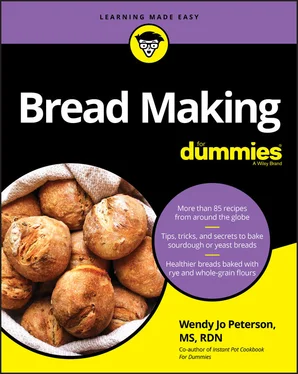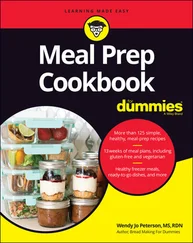71 73
72 74
73 75
74 76
75 77
76 78
77 79
78 80
79 81
80 82
81 83
82 84
83 85
84 86
85 87
86 89
87 90
88 91
89 92
90 93
91 94
92 95
93 96
94 97
95 98
96 99
97 100
98 101
99 102
100 103
101 104
102 105
103 106
104 107
105 108
106 109
107 110
108 111
109 112
110 113
111 114
112 115
113 116
114 117
115 118
116 119
117 120
118 121
119 122
120 123
121 124
122 125
123 126
124 127
125 128
126 129
127 130
128 131
129 132
130 133
131 134
132 135
133 136
134 137
135 138
136 139
137 140
138 141
139 142
140 143
141 144
142 145
143 146
144 147
145 148
146 149
147 150
148 151
149 152
150 153
151 154
152 155
153 156
154 157
155 159
156 160
157 161
158 162
159 163
160 164
161 165
162 166
163 167
164 168
165 169
166 170
167 171
168 172
169 173
170 174
171 175
172 176
173 177
174 178
175 179
176 180
177 181
178 182
179 183
180 184
181 185
182 186
183 187
184 188
185 189
186 190
187 191
188 192
189 193
190 194
191 195
192 196
193 197
194 198
195 199
196 200
197 201
198 202
199 203
200 204
201 205
202 206
203 207
204 208
205 209
206 210
207 211
208 212
209 213
210 215
211 216
212 217
213 218
214 219
215 220
216 221
217 222
218 223
219 224
220 225
221 226
222 227
223 229
224 230
225 231
226 232
227 233
228 234
229 235
230 236
231 237
232 238
233 239
234 240
235 241
236 242
237 243
238 244
239 245
240 246
241 247
242 249
243 250
244 251
245 252
246 253
247 254
248 255
249 257
250 258
251 259
252 260
253 261
254 263
255 264
256 265
257 266
258 267
259 268
260 269
261 270
262 271
263 272
264 273
265 274
266 275
267 276
268 277
269 278
270 279
271 280
272 281
273 282
274 283
If you’ve recently found yourself curious about bread making, you’re not alone! The age-old ritual of mixing flour, water, and yeast to create a delicious loaf of bread is growing in popularity.
And it’s not surprising. Bread is part of the soul. In fact, some scientists believe bread making has been around for 30,000 years. From flatbreads to loaves, bread can easily be considered the most widely consumed food on Earth. Every culture has some type of bread as a staple in their diet.
You no longer need to pound grains between rocks to yield flour, but bread making still requires a bit more effort than going to a store and simply buying a loaf. Bread making is a labor of love, and the smell of hot bread fresh from the oven is just one of the many rewards of making your own. With this book as your guide, you’ll be reaping the rewards in no time!
Think of this book as your own personal bread-making coach! You start by getting familiar with some of the science behind bread making. Don’t worry, there won’t be a quiz and you don’t have to memorize any technical terms or formulas, but understanding how just a few ingredients combine to make a delicious loaf of bread is important. I explain which flours and types of yeast are used to make different kinds of bread, and I show you some bread-making techniques that will come in handy. Finally, I help you stock your kitchen for your bread-making adventure, before offering more than 85 recipes to choose from.
This book is a reference, which means you don’t have to read it from beginning to end and you don’t have to commit it to memory. Instead, you can dip into these pages over and over again to find the information you need. The Table of Contents and Index will point you in the right direction.
Sidebars (text in gray boxes) and anything marked with the Technical Stuff icon (more on that later) can be skipped without missing the main point of the subject at hand.
Here are a few suggestions for getting the most out of the recipes in this book:
Read each recipe from top to bottom before you make your grocery list to ensure you have all the ingredients you need.
In the ingredients list, milk means whole milk and butter means unsalted butter; all-purpose flour means white, unbleached, all-purpose flour; and warm water means water between 100 and 110 degrees (it should feel warm to the touch, but not hot).
A “floured surface” is generally ½ cup of all-purpose flour on a flat surface. You can add more or less flour based on the stickiness of the dough. (If the dough is sticky, add a little more flour to the surface; if the dough is dryer, add a little less flour to the surface.)
If your house is cool or drafty, consider allowing the dough to rise in a cold oven with the light on. Cover the dough bowl with a tea towel, place it in a cold oven, and turn on the oven light. (Be sure to leave a note on the oven, so no one accidentally heats the oven with the dough inside!)
You can use either fresh or dried herbs. For easy substitution, just keep in mind that 1 teaspoon of dried is equivalent to 1 tablespoon of fresh.
Pay special attention to the techniques called for, whether hand kneading or using a stand mixer with a dough hook. Technique affects the end result, so be sure to follow the recipe.
If possible, use a scale to measure the ingredients instead of relying on measuring cups and spoons. Bread making is a science, and the more precise you can be with your measurements, the better.
Any recipes that are vegetarian are marked with the tomato icon () in the Recipes in This Book and the Recipes in This Chapter lists. (Most of the recipes in this book are, not surprisingly, vegetarian!)
The recipes in this book include information on how long you can store the bread. If you can’t use the bread in the recommended timeframe, you can always place all or part of a loaf in a resealable plastic, freezer-safe bag and store it in the freezer for later use. To defrost, remove from the freezer and let the breads return to room temperature in the freezer bag, or place on a baking sheet and bake at 350 degrees for 10 minutes. Toasting bread is also a great way to defrost without the wait.
Within this book, you may note that some web addresses break across two lines of text. If you’re reading this book in print an want to visit one of these web pages, simply key in the web address exactly as it’s noted in the text, pretending as though the line break doesn’t exist. If you’re reading this as an e-book, you’ve got it easy — just click the web address to be taken directly to the web page.
In writing this book, I made a few assumptions about you, the reader:
You’ve tasted homemade or bakery-style bread and you know what you’re aiming to achieve.
You have basic knowledge of cooking, baking, and measuring.
You’re patient — bread making definitely is not a quick process!
Читать дальше












